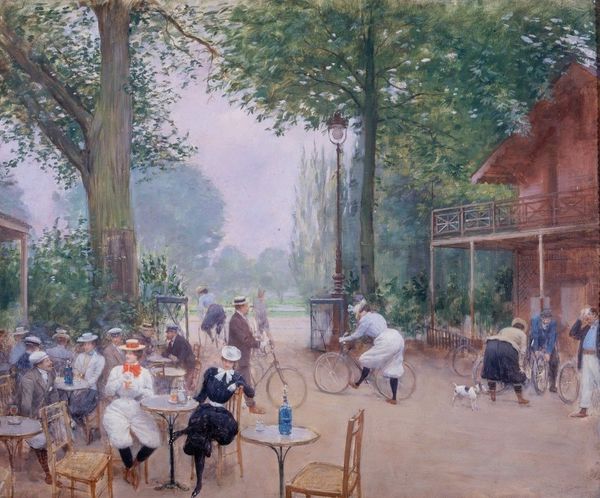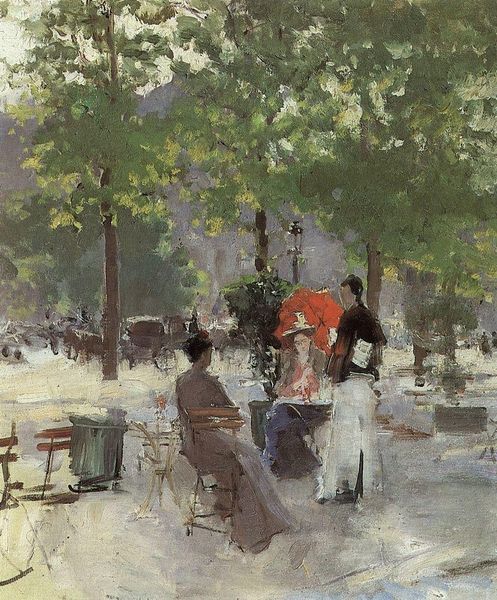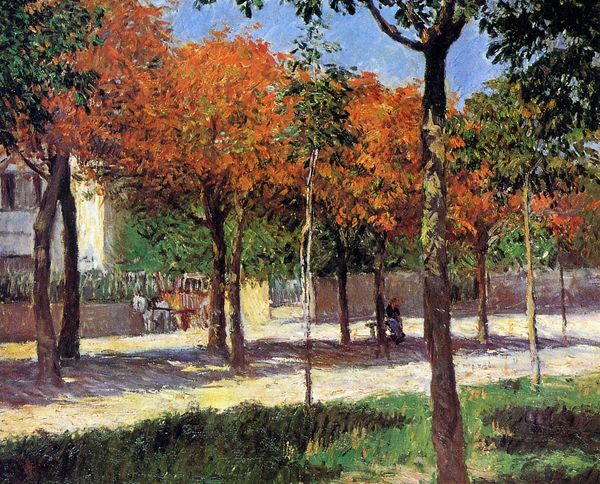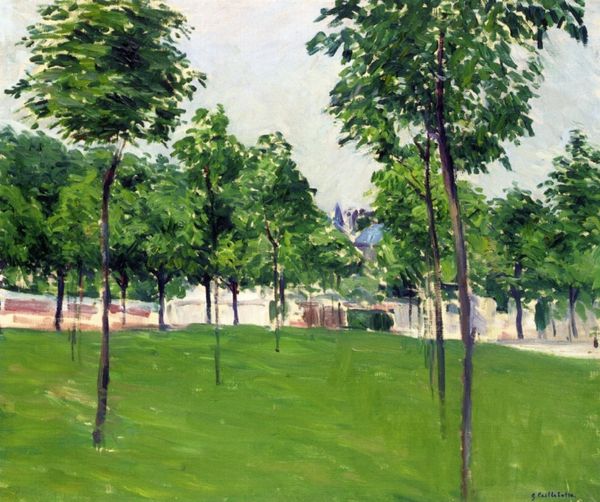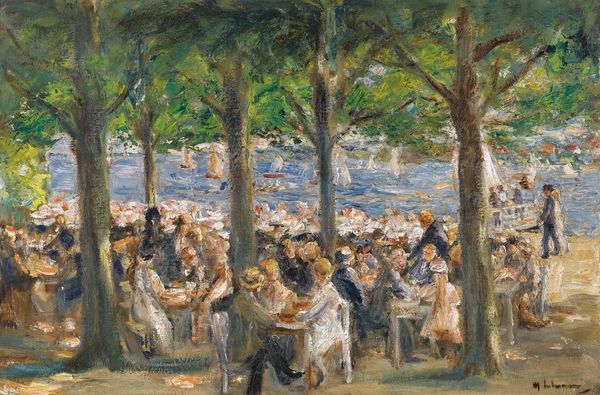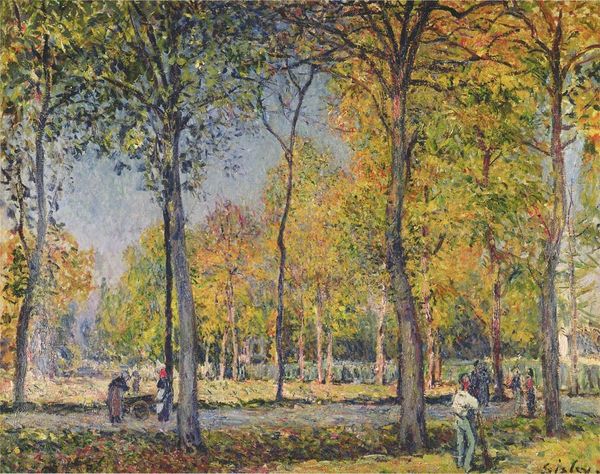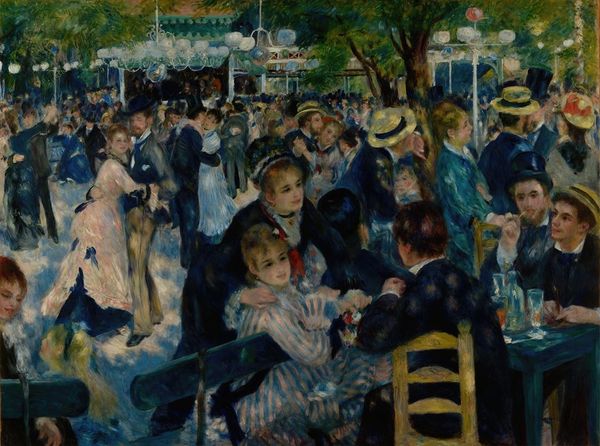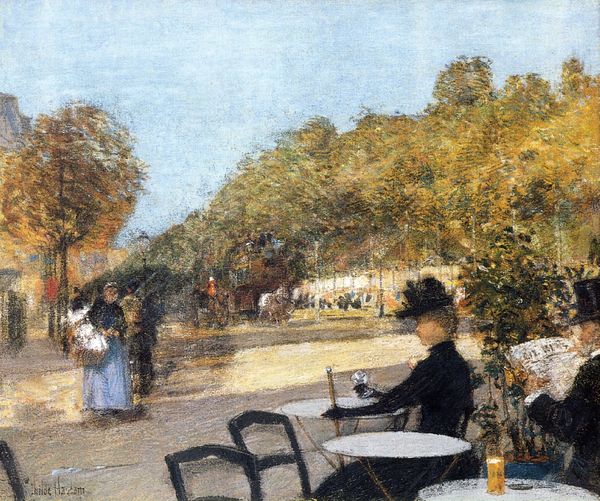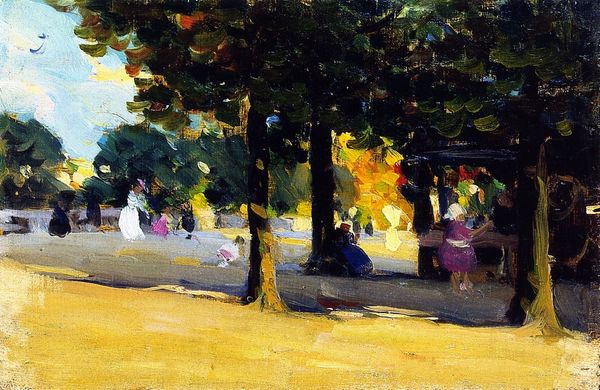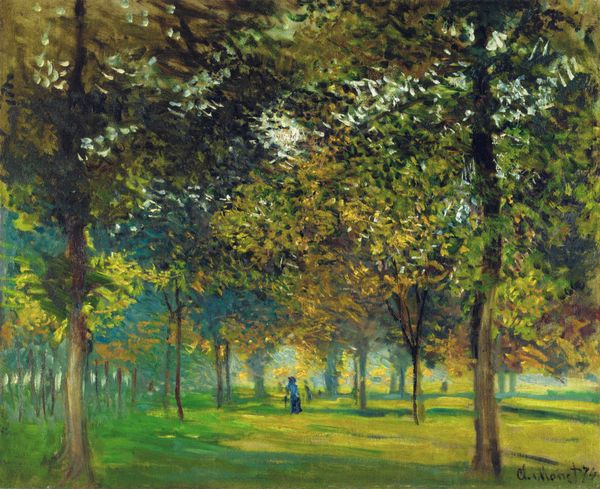
Copyright: Public domain
Editor: This is "Restaurant De oude Vink," painted by Max Liebermann in 1905, using oil paints, it seems. I am immediately struck by the green hues that give it such a refreshing feel. What catches your eye when you look at it? Curator: Well, for me, it’s all about the conditions of production here. Liebermann, painting en plein-air, captures a moment of bourgeois leisure. Think about the materiality of paint itself - the labor, the pigments, the very industry that supports the ease displayed in the subject matter. These tables weren't set by magic; they signify a whole system of labour, consumption, and social hierarchy. Editor: So, you're saying the scene depicts not just a pleasant afternoon, but also the industrial and social structures that make that afternoon possible? The making of art highlights labor in other contexts, too, in a way? Curator: Precisely! Liebermann’s loose brushstrokes are deceptively casual. How much deliberate staging went into such an image, depicting a fleeting moment? It encourages us to ask ourselves about all the materials involved in generating an idyllic scene like this. What does this suggest about the relationship between high art and everyday life? Editor: That's such an interesting lens to see it through. I was so focused on the Impressionistic style I didn't think about the broader socioeconomic context. I will look closer at other landscape paintings now, and think more about these elements in play! Curator: Exactly! Once you begin to see it, you begin to find new appreciation. Art reveals a whole unseen world that becomes clearer through material and labour.
Comments
No comments
Be the first to comment and join the conversation on the ultimate creative platform.
